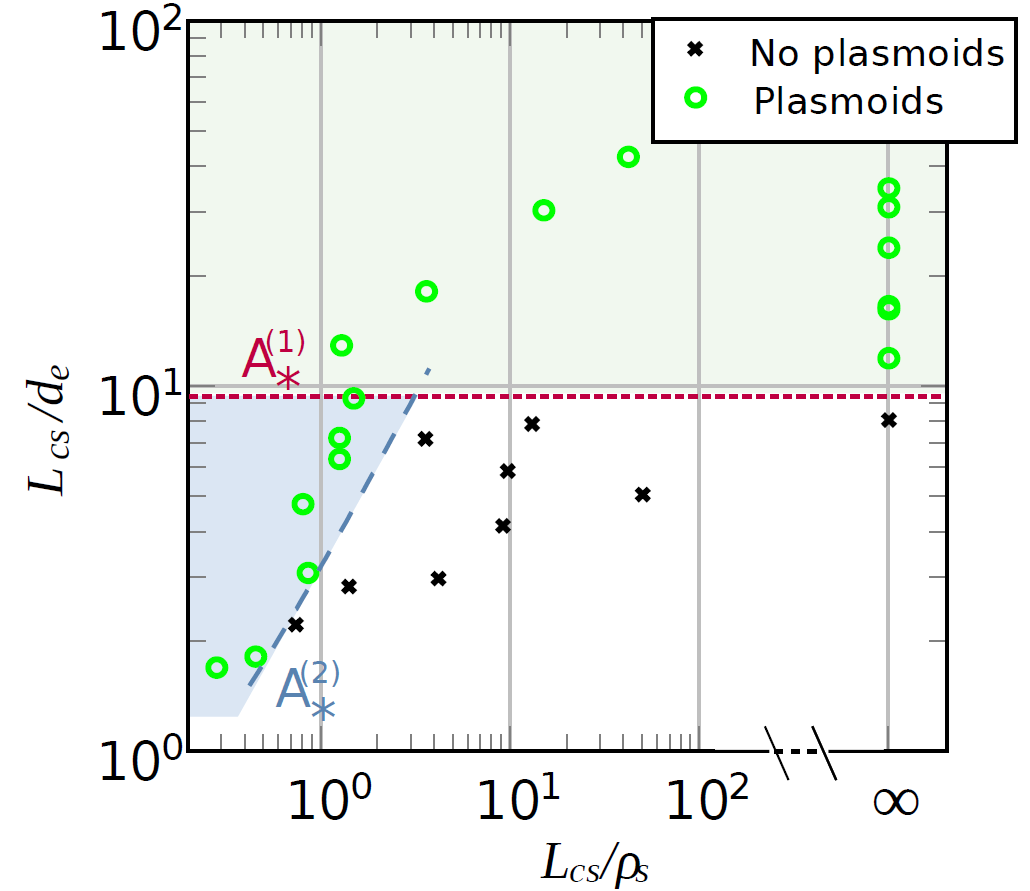Collisionless Plasmoid Instability
In these studies, we investigate the collisionless plasmoid instability in the context of magnetic reconnection. The first study (Granier, PRE 2022) focuses on the marginal stability conditions for the formation of plasmoids in collisionless current sheets with a strong guide field. We analyze the geometry of the reconnecting current sheet and identify the regimes in which plasmoid instability occurs. The study shows that plasmoids can be formed from current sheets with a smaller aspect ratio compared to the collisional regime.

The second study (Granier, JPP 2023) expands on the investigation by analyzing the impact of finite electron beta (βe) and electron Larmor radius effects on the collisionless plasmoid instability in the presence of a strong guide field. Comparisons between gyrofluid and gyrokinetic simulations demonstrate the capability of gyrofluid models in predicting the observed plasmoid instability. The results indicate that finite βe promotes plasmoid growth and reduces the critical aspect ratio for plasmoid formation. The study provides insights into the role of electron-scale effects in collisionless reconnection.

Both studies employ the numerical solver SCOPE3D, which solves the collisionless plasma equations. The first study (Granier, PRE 2022) solely uses the fluid numerical solver, while the second study (Granier, JPP 2023) adapts SCOPE3D to solve the gyrofluid equations and includes gyrokinetic simulations using the AstroGK code
Overall, these studies contribute to understanding the collisionless plasmoid instability. The results obtained from the fluid and gyrofluid models provide valuable insights into the stability of current sheets and the role of electron-scale effects in collisionless reconnection.

